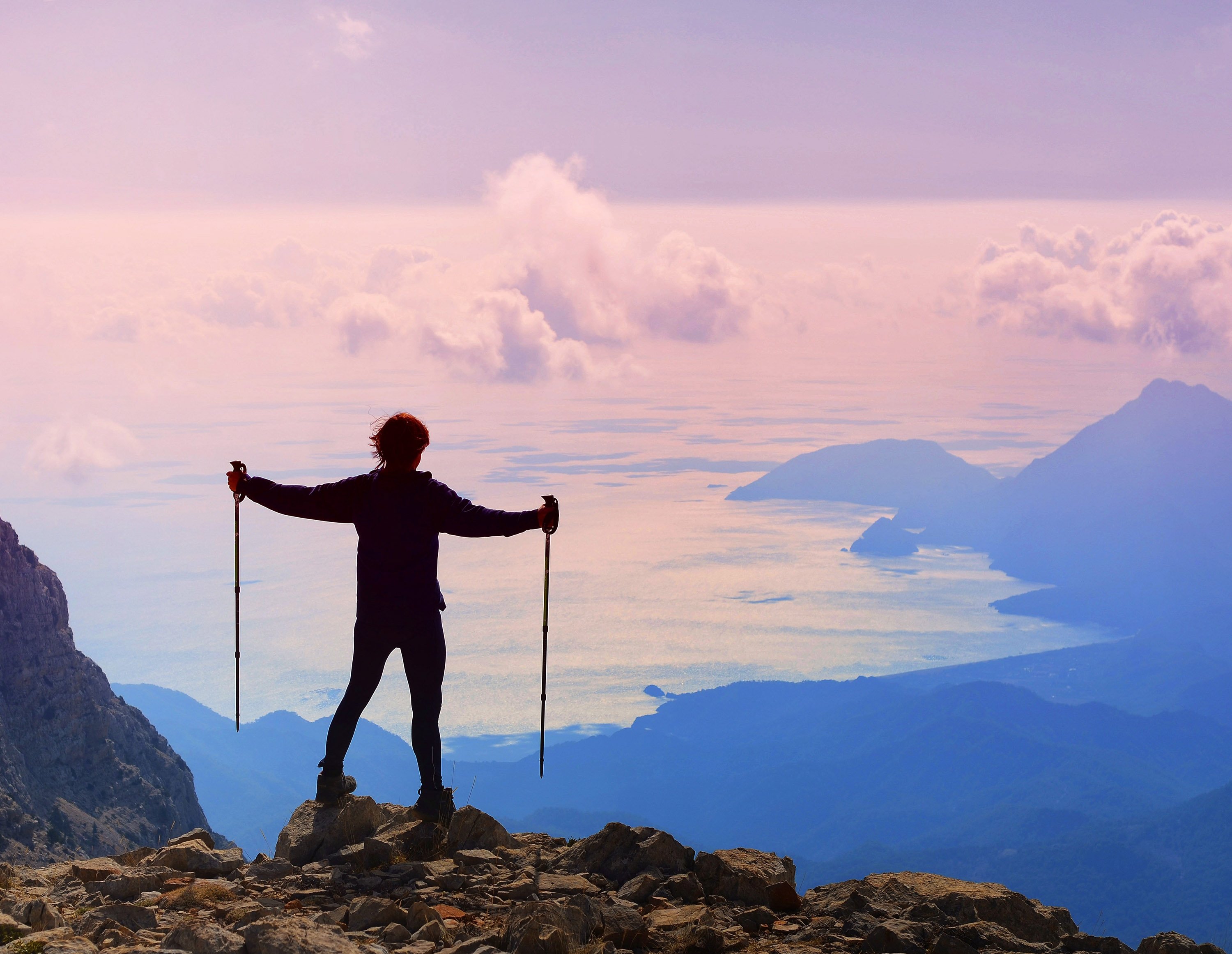© Turkuvaz Haberleşme ve Yayıncılık 2026
Walking, according to Rebecca Solnit, the author of the book "Wanderlust," is merely "the unconsidered locomotive means between two sites." In essence, this definition is sufficient. We put one foot in front of the other to reach our destination. However, walking is more than just a mode of movement.
Being on the road is a protest against our comfort zone and a spiritual experience. There is no competition, and the only boundaries are the ones self-imposed in our minds.
Today, walking is not only a means of getting from point A to B but a prerequisite for a healthy life.
Walking is no longer possible on the fast-paced, crowded streets of big cities, and "hiking parks" have become an indispensable part of urban life. Just 50 years ago, walking was a major means of travel. It was just an act of getting somewhere, nothing more. Today, we will talk about movement and its place in our lives, a topic that has been discussed and written about by many for centuries.
Intangible paths to oneself
Sociologist David Le Breton sums up the act of walking as "to experience the astonishment of existing.” He says it opens you up to the world and heals people by invoking feelings of happiness. When walking unknown roads and landscapes, one is mostly alone, besides the odd encounter along the way. Maybe this is why philosopher, writer and composer Jean-Jacques Rousseau says a march done alone is an experience of true freedom.
Walking is an inexhaustible pastime and source of inspiration, to be enjoyed with an open mind conducive to unexpected encounters and surprises. The desired destination is within oneself. By creating a personal road map, a physical walk can also be a journey toward our inner selves. Walks transform people, even if they don't notice. What they see, hear and feel connects the pieces of life to form a bigger picture, like a jigsaw puzzle, taking them on a journey of self-discovery or self-avoidance.
Walking away from the chaos of cities
Today, spending time with oneself has become a luxury. We are constantly exposed to the chaos of modern life and are unable to blow the whistle and call a time-out. Walking offers us the opportunity to gather our awareness and be grounded in the moment, even if for a short time. We call this a breathing break, like the intermission at the cinema where we evaluate the first half of the movie and predict what will happen next. Or think of nothing at all. A walk offers us an opportunity to set aside our burden of responsibilities.
A walk like this in a big city may seem utopian, which is why we must find comfort in nature to escape the demands of daily life. Those of us lucky enough to be living close to the Mediterranean must take advantage of the unique paths it has to offer, one of them being the "Lycian Way."
Ancient cities with delightful walking trails
The Lycian Way, which takes its name from the Lycian civilization, has become one of the most popular hiking trails. Located on the southern Teke peninsula, the trail offers a unique walking experience to visitors with a combination of Mediterranean views, a mountainous hinterland and ancient ruins. The region, known as the "land of lights" is surrounded by Burdur-Gölhisar in the north, Muğla- Köyceğiz in the west, Antalya in the east.
This civilization that changed the history of Anatolia made valuable contributions to the region's culture by fighting alongside the Trojans under the leadership of Sarpedon. An advanced civilization, the Lycians had their own voting framework in line with today's democratic law. The ancient civilization serves as an inspiration for many democratic governments today.
A long route, a long break
British-Turkish amateur historian Kate Clow researched, designed and waymarked the 555-kilometer (345 miles) route in the 1990s. The track starts from Muğla's Fethiye district in the villages of Hisarönü-Ovacık and ends at Antalya's Geyikbayırı village. She made significant contributions to the walking trail known as Turkey's first long-distance hiking trail.
Glorious natural beauties await you on the route with more than 20 ancient cities. The perfectly-placed Gelidonya Lighthouse, which received the "Best View" award of 2007, is one of the favorite spots of hikers on the route.
It is also possible to come across steep slopes on the track stretching along the coast. Sometimes these slopes make walking a little difficult, however, forest areas, beaches and roads leading to the harbors are at accessible distances.
If you make up your mind to walk the whole road in one stretch, be prepared to set aside 25-40 days, depending on your stamina and weather conditions. If you decide to make this trip a relaxing one, choose the track that suits you best.
For those worried about getting lost on the way, I can easily say, it is not possible. The route is marked by a Grande Randonnee (GR) system with prominent yellow routing signs at junction points. Everyone who loves nature can easily take a walk along the Lycian road.
Thanks to the mild Mediterranean climate, the route is open for walks 11 months of the year. The walkway will offer different views depending on the season. You can also choose from the many paths depending on the kind of views you like the most.

Are you ready to meet yourself again?
Long walking routes and difficult routes can be daunting. However, if we do not leave our comfort zone, we cannot add new experiences to ourselves. Sometimes, a small step in the right direction is enough to motivate us. The road is full of surprises. We do not know what awaits us at the end of the path. However, each experience offers an exciting opportunity to change ourselves for the better.
